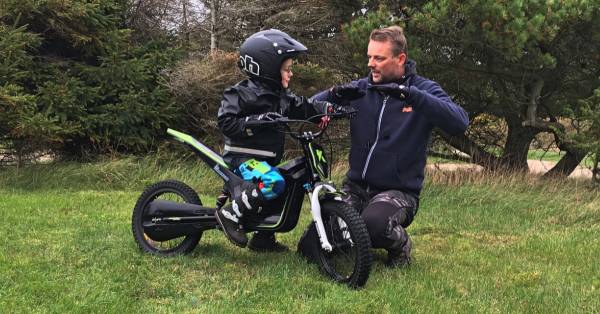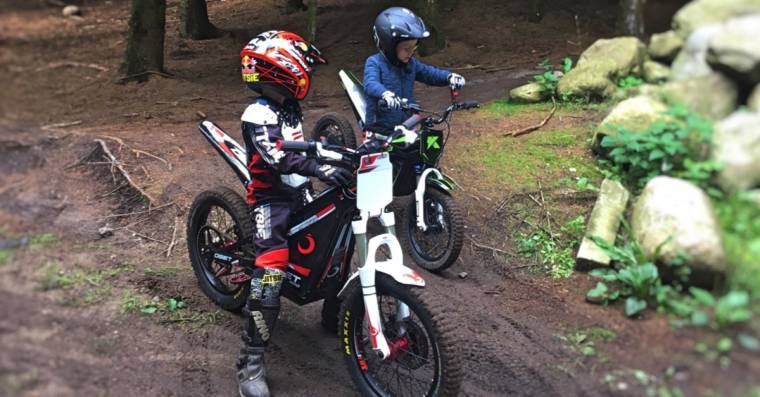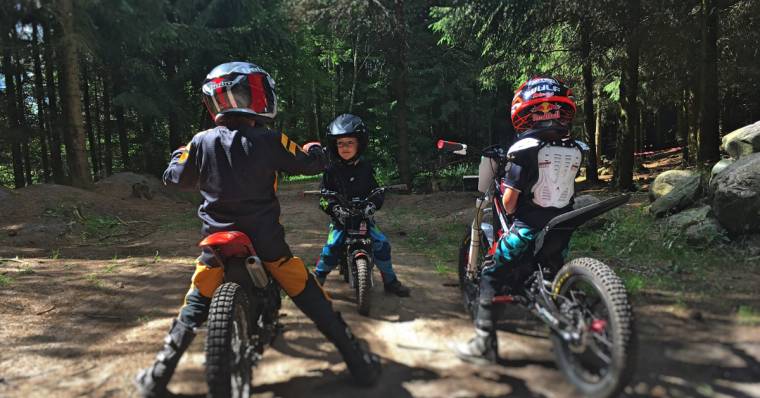There are many opinions on whether training should be conducted alone or together with others.
I will, in this article, try to sum-up some of the experiences that we have made on the subject.
The first thought is quite often, that it will be better for the child to train together with others.
Although this has obvious benefits, which I will try to review later, Solo training also has some very elementary benefits which I will try to explain.

Solo training.
With the term “Solo training”, we mean a training where only the Rider (the child) and the Coach (parents) are present.
Solo Training has several benefits – including.
- Training at home.
By training at home, or in close connection, makes it possible to make the Training more spontaneous.
It can be a day, where there is a 15 minutes window, where a few simple skills/exercises can be done. Or It can be because you just want to train a new skill, that needs repeating. - Higher level of focus from the child
By eliminating external influences, like other children or riders, you make it easier for the child to focus on the task at hand. This can be especially beneficial at first, when the child needs to learn how to ride a motorcycle, or it can be later in the training where the child needs to acquire new skills. - 1:1
By being together with your child, gives you the opportunity to form a unique bond. This can be further enhanced with Solo training. Solo Training helps build a secure environment for the rider. - Freedom to fail
Children, like adults, often do not want to show their weaknesses in public. Therefore, it may be a good idea to practice skills that the child has problems doing, in a safe environment.
This environment is easier to create when using Solo training.
Once the child reaches a level where the child feels safe, it is easier to move further training of this skill into a public space. - Single Track training.
On juniormoto.com, we have previously written about the benefits of Single Track training. This is very much a Solo training thing, and we would strongly recommend you try it out.
You can read more about Single Track training here.
When it comes to Solo Training, there are also challenges that you need to be able to navigate.
- It can be difficult to motivate yourself – and your child.
It can be difficult as a Coach to motivate yourself to go out and train.
It is easier when there is a “buddy” pulling you off the couch.
Don’t expect your child to be the one who demands training – there are lots of other things that are exciting, fun and interesting for them, which is why it’s up to you to motivate yourself to go.
Remember that it is your job to motivate your child to go training – and it is sometimes an equally important (and difficult) task.
- Make sure it’s fun
It might sound elementary, but there’s only one who can make sure it a fun and interesting Training session – and that’s you.
Making the training fun for your child, is also what should make it easier for you to motivate your child for the next training session.
Make sure that Solo Training sessions don’t get too long.
Rather, make a shorter session, where the child still wants more. It makes it easier next time.

Training with others.
Training with others means that we are out in an area where there are others who also ride motorcycles.
For most cases, it will still require that you are the coach. In some cases, it may, especially with older children, mean that there is some form of joint training (One coach for multiple riders). We will not put so much emphasis on the joint training part in this article.
Training with others has some clear benefits.
- Easier to get out training.
There is a training planned, and there are people who expect you to come!
As a result you will have an easier time motivating yourself to go.
It may sound like a trivial thing, but it is my experience the number one thing that stops children in motorsport, is because they do not get to training regularly.
This makes other hobbies sneaks in at place, which in term beat the motorcycle. - Motivation of others.
Most of us gets motivated by seeing others train on their motorcycles. This applies both to the rider and to the coach.
The rider gets motivated and often gathers the courage to try things they see other riders embark on. Sometimes it’s out of competition, while it’s sometimes purely curiosity. Either way it fine.
The coach gets inspiration from seeing other teams, and how they get around training. Getting new inputs and ideas. - The community.
It is important for both adults and children to be part of a community. This is especially important for the child, who in the community meets someone who has some of the same interests and challenges.
Its normal for your child to be the only one to do motorsport, and there are no friends in the Kindergarten, school or likewise, that they can share the experience with. A club will normally give you child this community, where friendships can be founded, and experiences shared. - The support of a training facility.
When it comes to motorsport, it is often a matter of training facilities. For cases this means a race track.
In Trial, training facilities are often a terrain that offers opportunities to build sections.
This will give you an opportunity to train skills that require certain set of terrain – ie. Rocks, logs, woods hills and so on. Also, it will give the child the opportunity to practice training in sections. - Idols
It is always nice to have someone to look up to.
When training with others, it gives the opportunity to measure yourself against others.
There will also be older riders who can show the child what is possible.
In this way, idols and role models can be built that can give the child something to strive for.
As with Solo training, there are also some things you need to be aware of when you train with others.
- Focus of the Rider
It can be difficult for the child to stay focused, when there are others around.
This may be alright in some cases, because – lets be frank – its children.
We use various methods on this matter, that work for us when it comes to maintaining focus in training. You can find more about them in the article on focus points and training capacity. - Focus for the coach.
If you thought you could go free, think again.
It is important that you, as the coach, also keep your focus.
This applies to the coach keeping the focus on the Rider (and not to be caught in long conversations with other parents).
But this is especially true when it comes to measuring your child against others.
Have focus on what you are training and your program – not what the others can or cannot do.
That’s what I just had on the topic of training alone or with others… But remember…
The only wrong training – is no training!
Enjoy.




 Switch to lithium battery on a Trial motorcycle.
Switch to lithium battery on a Trial motorcycle.
